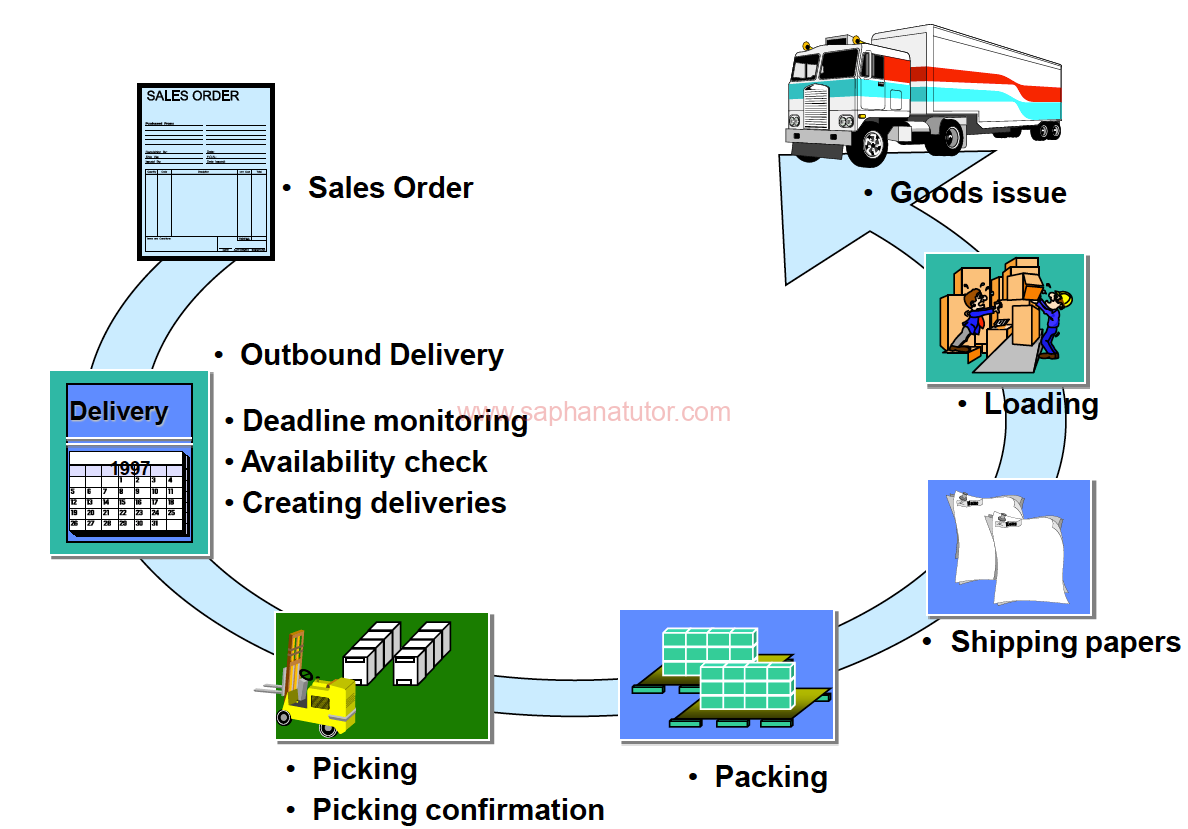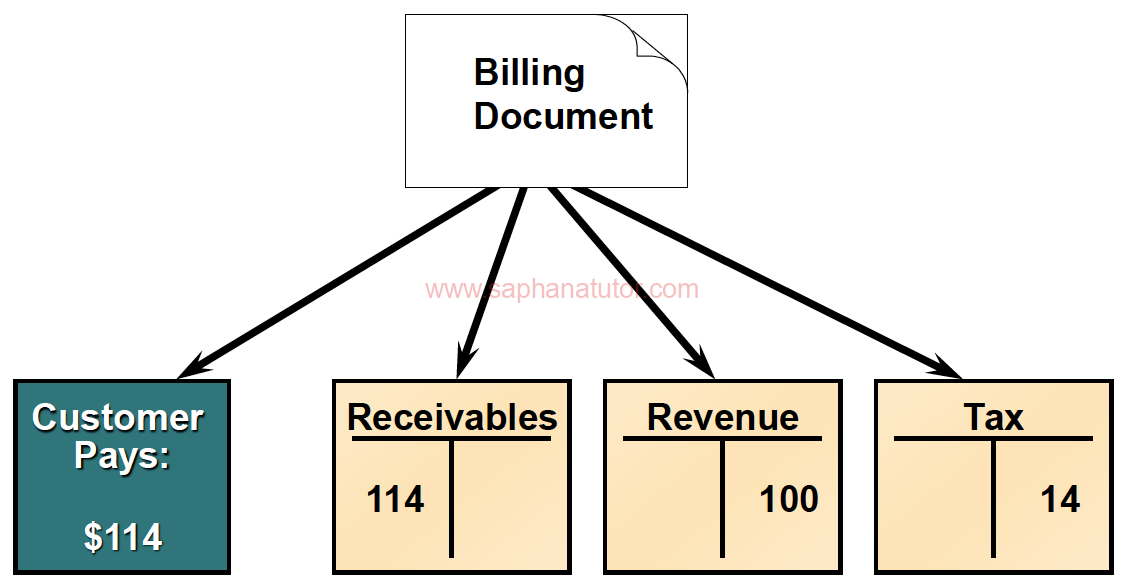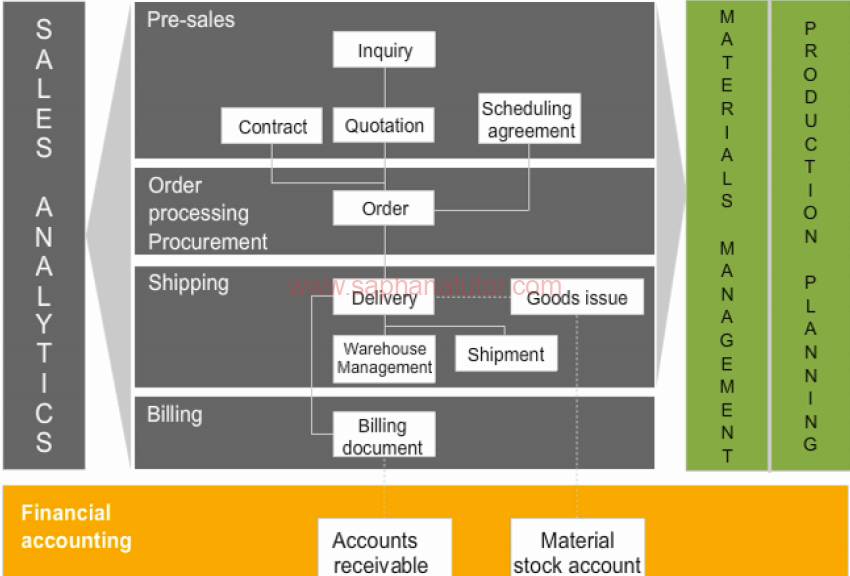Discover the SAP S/4HANA Sales OTC Business Process. Streamline your Order-to-Cash cycle with enhanced efficiency, from order creation to invoicing and payment collection.
In SAP S4hana Sales, the Sales Order to Cash process can begin with marketing and pre-sales activities like direct mail campaigns, online promotions, trade fair participation, and phone outreach. These efforts can lead to customer inquiries and quotation requests, which provide essential sales data that can be saved for future reference. When customers place orders, this data becomes valuable.
This pre-sales information is vital for planning and evaluating marketing and sales strategies and establishing long-term customer relationships. It can also help track lost sales, negotiate significant contracts, and meet documentation requirements for larger organizations.
| Pre-Sales | Inquiries and Quotations |
| Orders | Sales Order, Rush Order and Cash Sales |
| Outline Agreement | Contract and Scheduling Agreement. |
SAP S4hana Sales OTC Business Process
What is Sales Order in SAP?
In SAP Sales Order is an contractual agreement between a Company / Organisation and a Customer about delivering products and Services for pre-defined prices, Quantities and Time Frame.
Sales Order normally contains details like
- Customer and Material Information.
- Price Information for each Item.
- Information about delivery dates and confirmed delivery quantities.
- Information about Shipping processing and Billing.
When pre-sales activities succeed, customers place orders for products or services. SAP S/4HANA then generates a Sales order containing all the necessary information to manage the customer’s request. This system automates data transfer from master records and control tables, reducing input errors and eliminating redundant data entry during sales order creation.
During sales order processing, the system carries out basic functions, such as:
•Determining the delivering plant, Shipping point determination and Route determination automatically.
- Availability check (ATP) will be done automatically to determine a delivery (promise) date for a sales order.
- Delivery Scheduling: determines lead times for delivery processing.
- Transfer of requirements (TOR) -It determines the item requirements to be passed to materials planning (MRP).
- Pricing-indicates how a price should be determined for the sales order item.
- Sales Information System-dictates how the sales information system is updated with sales order information to plan and control sales.
- Checking Credit Limits.
Procurement
Before the customer receives their ordered material, the procurement process is essential. The method of procurement depends on the nature of the material and the sales transaction. Here are the different procurement options:
1. Directly from existing stock.
2. By restocking from a vendor, either through a purchase requisition or a purchase order.
3. Through in-house production, using a planned order or a production order.
Shipping
Shipping is the Basic process of Transporting Goods and Cargo. Once procurement is secured, the shipping process commences in SAP S/4HANA with the creation of outbound deliveries. Outbound deliveries play a crucial role in overseeing various process stages, including:
1. Picking and confirmation through warehouse management functions.
2. Packing (optional).
3. Transport planning and monitoring via shipment documents (optional).
4. Posting the goods issue (PGI).
Delivery Document is the Source of all shipping Activities.  Outbound deliveries are typically generated with reference to one or more sales orders, allowing for the seamless transfer of relevant information, such as materials and quantities, from the sales order to the delivery.
Outbound deliveries are typically generated with reference to one or more sales orders, allowing for the seamless transfer of relevant information, such as materials and quantities, from the sales order to the delivery.
To facilitate the picking of materials from the warehouse, the system creates warehouse tasks based on the delivery information. Warehouse tasks are vital for controlling goods movements within the warehouse, specifying where goods should be taken from and brought to.
When the goods issue is posted, it impacts the quantity and value of goods in stock, resulting in changes to balance sheet accounts in financial accounting.
Billing
After completing the shipping process, the next step involves creating billing documents. This can be achieved by referencing one or more outbound deliveries for physical products or sales orders for services. In both scenarios, pertinent information is transferred from previous documents to the billing document. The billing document acts as a data source for financial accounting, facilitating the monitoring and processing of customer payments.
When a billing document is generated, the system typically automates the determination of general ledger accounts and posts the relevant data. This results in the following actions:
1. A debit posting on the customer’s receivables account.
2. A credit posting on the revenue account.

Payment
Incoming payments from customers are documented by the accounting department. This process involves automatic postings on relevant general ledger accounts:
1. A debit posting on the cash account.
2. A credit memo on the customer’s receivables account.

